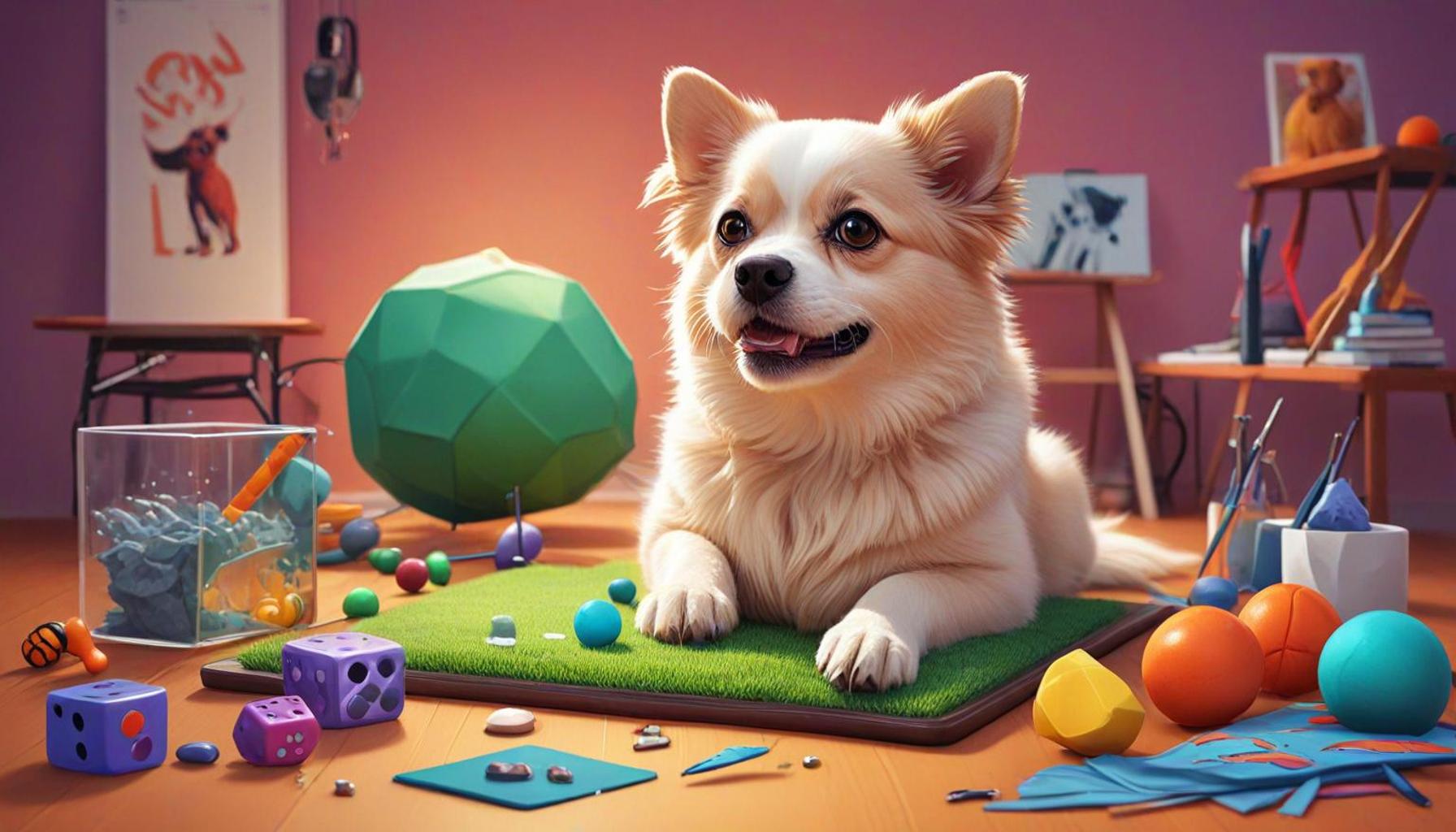Master Positive Reinforcement Techniques for Motivated Dog Training

In the realm of pet care, understanding how to train your dog effectively is paramount for a happy coexistence. Positive reinforcement techniques have emerged as a cornerstone of successful dog training, promoting not just obedience but also strengthening the bond between you and your furry companion. This method relies on rewarding desired behaviors, encouraging engagement, and fostering a harmonious living environment.
Why should pet owners consider these techniques? Here are some compelling reasons:
- Enhances communication: Builds mutual understanding between owner and dog.
- Increases motivation: Dogs are more eager to learn when rewarded positively.
- Strengthens relationships: Fosters trust and connection through mutual respect.
As we delve into the world of positive reinforcement, prepare to discover the Top 5 techniques that can transform your training sessions into rewarding experiences for both you and your dog. Whether you are a first-time dog owner or a seasoned trainer, these methods will illuminate the path toward successful, engaging, and enjoyable training.
SEE ALSO: Click here to read another article
Top 5 Techniques for Positive Reinforcement in Dog Training: Building Bonds Through Motivation
Training a dog is often a challenging yet rewarding experience. Positive reinforcement techniques not only help in teaching your furry friend obedience and proper behavior but also strengthen the bond you share with them. Embracing these methods transforms training from a tedious task into an enjoyable journey of mutual understanding and respect between you and your dog. This article delves into the top five techniques for utilizing positive reinforcement in dog training, examining their effectiveness and benefits. Prepare to embark on a journey that will transform your training methods and enhance your relationship with your canine companion!

5. Clicker Training
Clicker training is a well-known and scientifically backed method used widely in animal behavior circles. It employs a small handheld mechanical device that emits a distinct clicking sound, allowing your dog to associate this sound with a reward. The effectiveness of this technique lies in its capability to provide instant feedback, helping bridge the gap between action and reward.
- Introducing the clicker: Initially, the clicker must be associated positively. Begin by clicking the device and immediately rewarding your dog with a treat. This introductory phase helps your dog learn that a click signifies something positive is about to happen.
- Marking behaviors: Once your dog understands the clicker’s function, use the click to mark desired behaviors. For example, teach them to sit by clicking the instant their bottom touches the ground, followed by a treat.
- Gradual fading: Over time, as your dog becomes adept at following commands, you can start reducing reliance on the clicker while still offering rewards to maintain motivation.
This method not only promotes effective communication but also expedites learning by ensuring your dog recalls which actions lead to rewards. Furthermore, animals trained using clickers typically exhibit improved problem-solving skills and a higher level of engagement.
4. Treat Rewards
Leveraging your dog’s intrinsic motivation for food is a cornerstone of positive reinforcement. Treat-based rewards brilliantly capitalize on this natural inclination, providing a clear incentive to perform specific behaviors. The success of this method hinges on several essential factors:
- Choose the right treats: Select small, flavorful, and easy-to-eat options that are both desirable and healthy. High-quality treats such as small pieces of chicken or commercial treats designed for training sessions work well.
- Timing is key: The immediacy of the reward is crucial. Delivering a treat directly after the desired behavior solidifies the connection between action and reward, making it easier for your dog to understand and repeat the behavior.
- Vary rewards: Just as humans enjoy variety, dogs benefit from a range of rewards to keep them engaged. Alternate between high-value treats for challenging tasks and regular kibble for simpler commands to maintain interest without overwhelming or overfeeding them.
Using treats as a reward not only drives your dog to learn but also promotes positive emotional responses to training, reinforcing a cycle of achievement.
3. Praise and Affection
Dogs are inherently social creatures, thriving on interaction and approval from their human companions. Utilizing verbal praise and physical affection as training tools taps into their need for connection while encouraging compliance. Consider the following techniques:
- Verbal cues: Enthusiastically praising your dog with phrases like “Good boy!” or “Well done!” reinforces their positive behavior through auditory stimulation, which can be especially helpful with dogs that are highly attuned to their owner’s voice.
- Physical affection: Combine verbal praise with physical gestures, such as petting or belly rubs, to maximize the impact of the reward. Dogs often perceive human touch as a form of bonding, strengthening the urge to please.
- Consistency: Ensure that praise and affection are consistently used to reflect acceptable behaviors. Consistent reinforcement helps your dog understand which actions elicit positive responses.
Integrating human interaction into your training approach enriches the learning environment, making it relaxed and encouraging while deepening the mutual trust between you and your furry friend.
2. Play as a Reward
For many dogs, playtime offers immense joy, rivaling even their favorite treats. Leveraging the power of play provides a dynamic and interactive way to reward desired behaviors and cultivate enthusiasm. Here’s how to implement this effectively:
- Identify favorite games: Understand your dog’s play preferences, be it tug-of-war, fetch, or playful chasing. Tailoring play rewards to their liking ensures maximum enjoyment and engagement.
- Incorporate playtime: Use play as an immediate reward, linking it directly to successfully completed commands to reinforce the positive outcome.
- Engagement: By reserving certain high-energy games as rewards, you create a compelling incentive for your dog to perform tasks, associating training with positive, fun experiences.
Play not only boosts motivation but also augments your dog’s physical health, providing a well-rounded approach to training that incorporates exercise and mental stimulation.
1. Building Trust Through Consistency
The cornerstone of effective dog training through positive reinforcement is building trust through consistency. This principle lies at the heart of establishing a structured and predictable training regimen that your dog can understand and trust. Here’s how to cultivate this foundational element:
- Set clear rules: Communicate your expectations transparently by maintaining consistency in commands and responses. This clarity helps your dog determine acceptable behaviors.
- Regular training sessions: Establish a routine that encourages your dog to anticipate learning. Consistency in timing and structure creates a supportive environment conducive to skill acquisition.
- Stay patient: Acknowledge that dogs learn at individual paces. Patience reinforces a non-threatening learning atmosphere that inspires a willingness to try and succeed during training exercises.
Trust and consistency create an unshakeable foundation, fostering an environment where your dog feels secure and motivated to engage in the learning process. This approach is vital not only for acquiring new skills but also for nurturing a resilient, loving bond between you and your canine companion.
Employing these positive reinforcement techniques in your dog training endeavors offers a multitude of benefits, transforming the way you and your dog interact. By focusing on tools that nurture communication, motivation, and trust, you’re not only imparting valuable skills but also deepening the profound connection shared with your furry friend.
In the realm of dog training, the application of positive reinforcement techniques has garnered immense popularity. By focusing on rewards rather than punishments, trainers can foster a more engaged relationship between themselves and their canine companions. This second part delves deeper into the intricacies of various positive reinforcement methods, showcasing how they can enhance the training experience and deepen the bond between dog and owner.One of the most effective techniques is the use of treats as a form of reward. Dogs are inherently motivated by food, and when paired with training, treats can act as a powerful incentive for desired behaviors. For example, when a trainer uses treats to reinforce commands like “sit” or “stay,” the dog begins to associate these actions with positive outcomes. This relationship not only aids in obedience but also in creating an environment of trust and mutual understanding.Another substantial method is the practice of clicker training. This technique involves using a small handheld device that emits a distinct “click” sound when the dog performs the desired behavior. The sound serves as a bridge between the action and the reward, ensuring that the dog understands precisely what behavior is being reinforced. Clicker training is particularly advantageous as it allows for precise timing, helping to solidify the learning process. Many trainers find that dogs respond exceptionally well to this method, as it caters to their natural learning capabilities.In addition to treats and clicker training, engaging in play as a reward can lead to significant advancements in training efforts. Many dogs are enthusiastic about playtime with their favorite toys or games, and incorporating this into training sessions can transform the experience from a mundane chore into a fun activity. For instance, after successfully performing a command, the trainer can initiate a game of fetch, turning the session into an enjoyable experience that reinforces the bond between dog and owner.Moreover, social rewards, such as praise and affection, play a pivotal role in positive reinforcement training. Dogs are social animals and thrive on interaction with their owners. When a trainer offers verbal praise or pets in conjunction with rewarding behaviors, it enhances the emotional bond. The dog learns to associate training with positive feelings and emotional security, enriching their overall experience.Understanding the importance of timing is crucial in positive reinforcement methods. The effectiveness of these techniques relies heavily on the immediacy of the reward following the desired behavior. Delayed reinforcement can confuse the dog, making it unclear which action is being rewarded. Therefore, it’s essential for trainers to act quickly to ensure the dog fully grasps the connection between their action and the positive outcome.In summary, employing various techniques of positive reinforcement, such as using treats, clicker training, play, and social rewards, greatly enhances the training process. These methods not only facilitate obedience but also cultivate a trusting and enjoyable relationship between the dog and trainer, reinforcing the notion that training can be as much about building a bond as it is about teaching commands. By prioritizing motivation and positive interactions, trainers can discover new dimensions of connection with their canine companions.
CHECK OUT: Click here to explore more
Frequently Asked Questions About Positive Reinforcement Techniques in Dog Training
What is positive reinforcement in dog training?
Positive reinforcement in dog training involves rewarding desired behaviors to increase the likelihood of those behaviors being repeated. This technique is widely supported by animal behaviorists for building a bond based on trust and motivation. Rewards can include treats, praise, or playtime, all of which serve as incentives for the dog to continue good behavior.
Why choose positive reinforcement over other training methods?
Positive reinforcement is generally preferred because it focuses on rewarding good behavior rather than punishing bad behavior. This approach can lead to faster learning and a happier, more confident dog. Moreover, it strengthens the relationship between the owner and the dog, creating a positive training environment that facilitates better long-term results.
How do I implement positive reinforcement effectively?
To effectively use positive reinforcement, timing and consistency are crucial. Ensure you reward your dog immediately after the desired behavior to help them make the connection. Consistency in commands and rewards will further reinforce the learning process. Use clear, simple commands and reward consistently with the preferred motivator for your dog, whether it be treats, toys, or verbal praise.
Can positive reinforcement address all types of behavioral issues?
While positive reinforcement is highly effective for teaching new behaviors and commands, some complex behavioral issues might require additional strategies. However, it is considered a vital component in most behavior modification plans. Consulting a professional dog trainer can provide personalized guidance for addressing specific issues such as aggression or anxiety.
What are the common mistakes to avoid in positive reinforcement training?
A common mistake is mis-timing the reward, which can confuse the dog about which behavior is being reinforced. Additionally, relying too heavily on treats without gradually introducing other forms of praise might lead to a dependency. Ensure a balance between different types of rewards and focus on maintaining enthusiasm and consistency to promote successful training outcomes.
ADDITIONAL INSIGHTS: Expand your understanding here
Conclusion
The exploration of positive reinforcement techniques in dog training unveils a powerful approach that not only enhances a dog’s obedience but also strengthens the bond between the dog and its owner. These techniques focus on rewarding desired behaviors, which motivates dogs to learn and respond positively. In contrast to traditional punitive methods, positive reinforcement ensures a more enjoyable and effective training experience.
One of the most significant takeaways is the emphasis on building a motivational environment. By understanding what drives each individual dog—whether it’s treats, toys, or praise—trainers can tailor their approach to elicit the best responses. Moreover, consistency in rewards and commands plays a critical role in solidifying learned behaviors.
Another key point is the patience and time required when employing these techniques. While outcomes might not be immediate, the long-term benefits, such as a well-behaved and happy dog, far outweigh the initial investment of effort. The relationship built on trust and mutual respect contributes to a more harmonious coexistence.
Overall, positive reinforcement is a technique that requires thoughtful consideration, tailored strategies, and dedication. Yet, the rewards, both tangible and intangible, are boundless. In an era where the well-being of pets is paramount, adopting such humane training methods not only assists in behavioral correction but also nurtures an enduring connection between humans and their canine companions. The journey of discovery in understanding these methods invites further intrigue and experimentation, promising a future of companionship enriched with love and joy.


